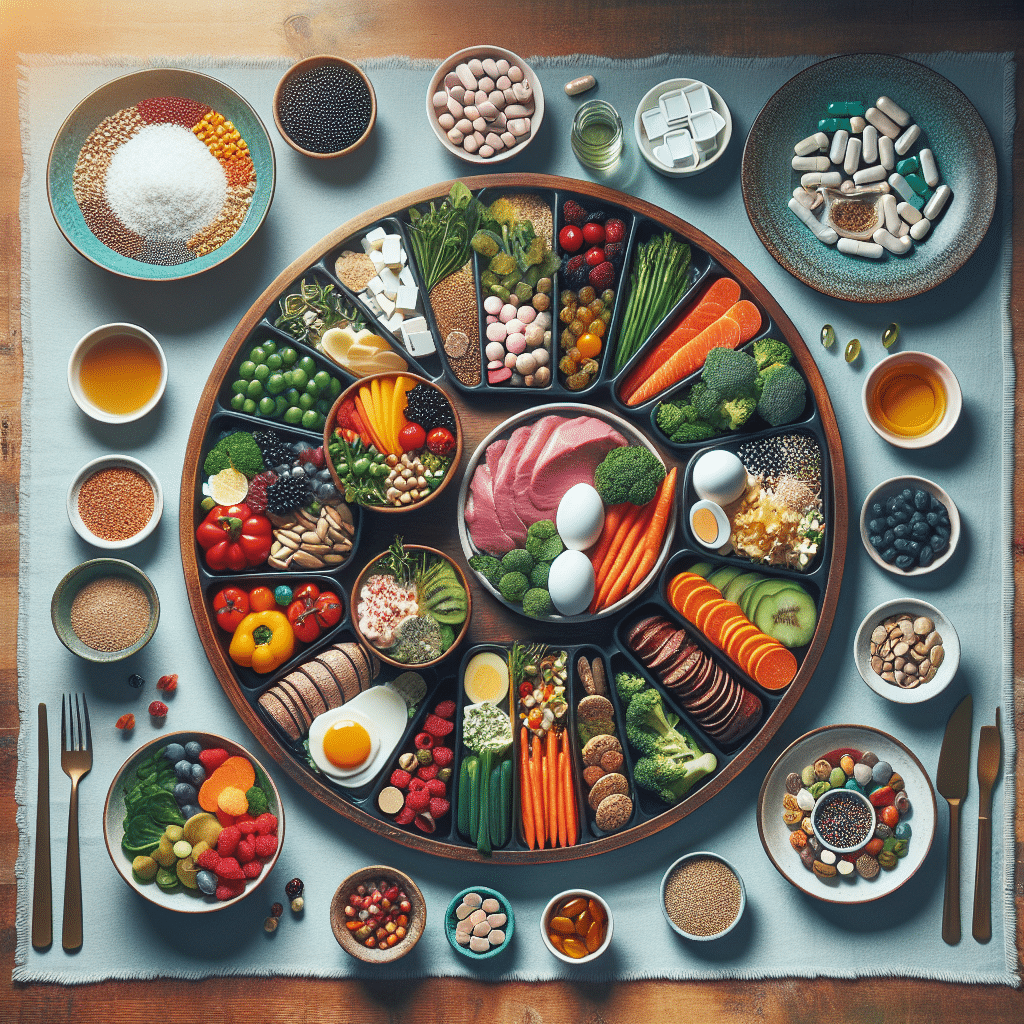Understanding Balanced Homemade Meals
Balanced homemade meals are those that provide an optimal ratio of macronutrients—proteins, fats, and carbohydrates—along with essential vitamins and minerals. Each meal should ideally include a source of protein, healthy fats, fibrous carbohydrates, and a variety of vegetables, ensuring that the body receives all necessary nutrients needed for optimal functioning.
Importance of Macronutrients
- Proteins: Vital for muscle repair and growth. Sources include lean meats, fish, eggs, legumes, and dairy products.
- Fats: Necessary for hormone production and cellular health. Healthy fats can be sourced from avocados, nuts, seeds, and olive oil.
- Carbohydrates: The body’s primary energy source. Opt for whole grains, fruits, and vegetables, which also provide fiber.
Building Blocks of a Balanced Meal
- Proteins: Aim for 20-30 grams per meal for most adults. Opt for diverse sources such as tofu, lentils, quinoa, chicken, and turkey.
- Healthy Fats: Include about 20-35% of your caloric intake from fats. Incorporate walnuts, chia seeds, and fatty fish like salmon.
- Carbohydrates: Choose complex carbs for sustained energy. A mix of sweet potatoes, brown rice, and whole-grain pasta can be beneficial.
The Role of Micronutrients
Micronutrients—vitamins and minerals—are crucial for metabolic processes.
- Vitamins: Roughly categorized into water-soluble (e.g., B vitamins and vitamin C) and fat-soluble (e.g., vitamins A, D, E, K). They support various bodily functions, from immune health to energy production.
- Minerals: Important minerals include calcium, magnesium, potassium, and iron. They contribute to bone health, muscle function, and cardiovascular health.
Crafting a Balanced Plate
- Fruits and Vegetables: They should comprise half the plate. Aim for a rainbow of colors to ensure a variety of phytonutrients.
- Protein Source: Include one serving (the size of your palm) of protein.
- Whole Grains: Allocate a quarter of your plate to whole grains. This can include quinoa, barley, or farro.
- Healthy Fats: Add a small amount of healthy fats like olive oil for drizzling or a sprinkle of seeds.
Meal Planning for Nutritional Adequacy
To guarantee nutritional adequacy, planning is key. Weekly meal prep can be an effective strategy. Here’s a simple framework for planning balanced meals.
Step 1: Choose the Base
Select a variety of grains and starchy vegetables such as:
- Brown Rice
- Quinoa
- Sweet Potatoes
Step 2: Select Proteins
Rotate between different protein sources to avoid boredom and ensure a wide spectrum of amino acids:
- Chicken
- Fish
- Legumes (lentils, chickpeas)
Step 3: Load Up on Vegetables
Aim for at least three different vegetables per meal, incorporating seasonal produce for freshness. This can include:
- Leafy Greens: Spinach, kale, or Swiss chard.
- Cruciferous Vegetables: Broccoli, cauliflower, and Brussels sprouts.
- Colorful Options: Peppers, carrots, and squash.
Step 4: Add Healthy Fats
Incorporate healthy fats thoughtfully, such as:
- Avocados
- Nuts and seeds
- Olive oil for cooking or dressing
Supplements: When and Why?
While many individuals can achieve nutritional adequacy through a well-balanced diet, some circumstances may necessitate supplementation. For instance:
- Vitamin D: Particularly important in regions with limited sunlight exposure.
- Omega-3 Fatty Acids: Beneficial for those who do not consume fatty fish regularly.
- Iron: Important for vegetarians and women of reproductive age.
Evaluating Supplement Needs
Consulting a healthcare professional or a registered dietitian is essential when considering supplements. They can analyze dietary patterns, lifestyle factors, and health conditions to recommend appropriate supplements tailored to individual needs.
Preparing Balanced Meals: Recipes to Try
-
Quinoa Salad with Chickpeas and Avocado
- Ingredients: Quinoa, canned chickpeas, diced avocado, cherry tomatoes, red onion, parsley, and olive oil.
- Method: Cook quinoa and let cool. Mix all ingredients in a bowl and dress with olive oil for a refreshing, nutrient-dense dish.
-
Baked Salmon with Sweet Potatoes and Broccoli
- Ingredients: Salmon fillet, sweet potatoes, broccoli, lemon, garlic, and olive oil.
- Method: Bake the salmon at 375°F with lemon and garlic. Roast sweet potatoes and broccoli tossed in olive oil.
-
Vegetable Stir-fry with Tofu
- Ingredients: Firm tofu, bell peppers, broccoli, carrots, soy sauce, and sesame oil.
- Method: Stir-fry tofu until golden, then add vegetables. Toss with soy sauce and a drizzle of sesame oil.
Tips for Ensuring Nutritional Adequacy
- Track Intake: Using apps like MyFitnessPal can help monitor food intake and nutrient consumption.
- Diversity is Key: Rotate vegetables and proteins weekly for a varied nutrient intake.
- Stay Hydrated: Water intake should not be neglected, which is crucial for overall health.
Conclusion: The Power of Home Cooking
Cultivating the habit of preparing balanced homemade meals offers a multitude of benefits, including savings, control over ingredients, and health improvements. When paired with thoughtful supplementation, individuals can not only enjoy delicious meals but also ensure they maintain optimal health and nutritional adequacy. Embracing this approach fosters a better understanding of food, promotes mindfulness in eating, and sustains overall wellness.
